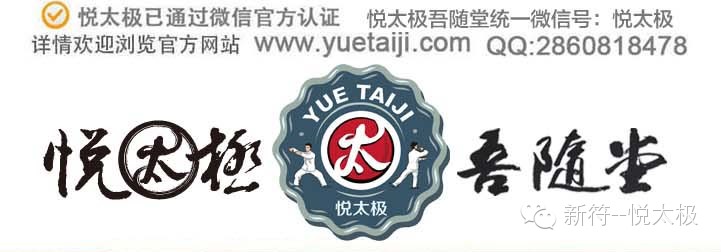
 A In Chinese etiquette, the so-called Three Unfilial Acts refer to:
A In Chinese etiquette, the so-called Three Unfilial Acts refer to:
1. Not marrying and having no children, thus cutting off ancestral worship (not marrying and having children is considered the greatest unfilial act according to Mencius);
2. Flattering and following blindly, leading parents into wrongdoing (blindly complying and not advising parents when they are wrong, causing them to fall into immorality);
3. Being poor and having elderly parents, yet not seeking an official position to support them (being in poverty while parents are old, yet not taking a government position to provide for them).
B There are Three Urgencies: urgency of the heart, urgency of the hands, urgency of nature;
C The Seven Emotions and Six Desires: Generally, the Seven Emotions refer to: joy, anger, sorrow, fear, love, hate, and desire; in medicine, the Seven Emotions refer to joy, anger, worry, thought, sadness, fright, and fear; the Six Desires generally refer to life, death, ears, eyes, mouth, and nose; in Buddhism, the Six Desires refer to desires for form, appearance, demeanor, speech, fine qualities, and human thoughts.;
D Talking Nonsense: Originally referred to the “Hu people” explaining Buddhist scriptures in the mainland. Hu refers to the ancient Chinese term for minority ethnic groups in the west and north. Talking nonsense refers to the Hu people speaking. Eight paths: non-Buddhists believe that the Hu people’s explanations of Buddhist scriptures are absurd. The Hu people’s explanations of the Eight Noble Paths are abbreviated as “talking nonsense“. Therefore, later generations used terms like talking nonsense, absurd talk, etc., to refer to untrustworthy statements. Today, it generally refers to all baseless claims.
E Five Big and Three Coarse: “Five Big” refers to having big hands and feet plus a big head; “Three Coarse” refers to having coarse legs, a coarse waist, and a coarse neck;
F Not Recognizing Six Relatives: Nowadays, “Six Relatives” generally refers to relatives. Historically, “Six Relatives” had specific content, with three representative interpretations: 1. According to the Zuo Zhuan, the Six Relatives refer to father and son, brothers, aunts (father’s sisters), nephews, marriage (wife’s family), and in-laws (husband’s family). 2. According to Laozi, the Six Relatives refer to father, son, brothers, and spouses. 3. According to Han Shu, the Six Relatives refer to father, mother, brothers, and children. Later generations generally agree with the third interpretation, as it is the closest in blood and marital relationships.
G All Five Poisons: The five poisons are five animals: snake, scorpion, centipede, gecko, and toad; the five human poisons are eating, drinking, soliciting, gambling, and smoking.
H Three Longs and Two Shorts: “Three Longs and Two Shorts” usually refers to unexpected disasters, often euphemistically referred to as “encountering misfortune” or “death.” “Three Longs and Two Shorts” is related to the burial of the deceased. Coffins are made of six pieces of wood. The coffin lid and bottom, along with the left and right sides, are long pieces of wood; the front and back are short square pieces. Why not call it four longs and two shorts? Because the coffin lid is placed on after the body is placed inside, it is only referred to as three longs. The term “Three Longs and Two Shorts” has become a widely used euphemism for death, evolving from a colloquial expression to an idiom.
Another explanation: The Book of Rites records: “Coffin binding, two short, three long; each binding one.” “Coffin binding refers to ancient coffins that did not use nails, hence bound with leather. Two short refers to the vertical binding. The horizontal binding is three lines. Each binding one refers to the small wedge that connects the coffin lid and bottom. The wedge (rèn) is small, wide at both ends and narrow in the middle. It is inserted into the grooves on both sides of the coffin to ensure a tight fit between the lid and the coffin body. The wedge and leather are used together to secure the coffin lid. Later, nails were used to secure the coffin lid, which was more convenient and quick, leading to the gradual elimination of the wedge. The leather binding for coffins also disappeared, but the term has persisted and is often used in modern Chinese.
I Ten Evils Not to Be Forgiven: Refers to extremely serious crimes that cannot be forgiven. During the Wei, Jin, and Northern and Southern Dynasties, various legal codes were compiled, among which the Wei Code and Qi Code were influential. The term “Ten Evils” first appeared in the Qi Code, originally referred to as “Ten Major Crimes”. The Ten Major Crimes were defined as “Ten Evils” and were strictly unforgivable. By the Sui and Tang Dynasties, the term “Ten Evils Not to Be Forgiven” was formally established, thus the Sui and Tang “Ten Evils Not to Be Forgiven” originated from the Qi Code‘s “Ten Major Crimes”. The main contents include:
1. Conspiracy to rebel, which has always been regarded as the most serious of the Ten Evils;
2. Conspiracy to commit treason, referring to acts that destroy the royal ancestral temples, tombs, and palaces;
3. Conspiracy to defect, meaning to defect to other enemy states;
4. Evil rebellion, referring to killing grandparents, parents, and other elders and respected relatives;
5. Unrighteousness, meaning lacking moral principles.
6. Great disrespect, stealing the emperor’s sacrificial vessels and daily items, forging imperial medicines to violate dietary restrictions;
7. Unfilial behavior, referring to cursing, accusing, and failing to support one’s grandparents and parents. After the death of grandparents and parents, failing to mourn and remarry during the mourning period;
8. Disharmony.
9. Unjust acts, referring to beating or killing officials (generally referring to local officials), failing to mourn after a husband’s death and remarrying, etc.
10. Internal strife, referring to committing adultery with a grandfather or father’s concubine.
The Yonghui Code of the Tang Dynasty listed the Ten Evils similarly to the Sui Dynasty. After that, except for the Yuan Dynasty, which changed the Ten Evils to “Various Evils”, the Ming and Qing Dynasties continued to include “Ten Evils” in their criminal law. Nowadays, the term Ten Evils is often used in a general sense.
J Three Aunts and Six Aunts: Three Aunts refer to nuns, Taoist priestesses, and diviners; Six Aunts refer to midwives, matchmakers, and various other women.
K Five Colors and Ten Hues: Five Colors: red, yellow, blue, white, black. Ten Hues: red, orange, yellow, green, cyan, blue, purple, black, white, plus one transparent.
L Four Bodies Not Working, Five Grains Not Differentiated:
Four Bodies: refers to the four limbs. “Five Bodies on the Ground” includes the head.
Five Grains: one interpretation is millet, foxtail millet, wheat, beans, and rice; another interpretation is millet, foxtail millet, wheat, beans, and hemp.
Enjoy Life, Enjoy Tai Chi!
Source: Internet. Welcome to send articles to: [email protected]
 For more information about the new version of Enjoy Tai Chi
For more information about the new version of Enjoy Tai Chi

